Since we had an afternoon in the LA area before heading up to Big Bear Lake, we toured the Richard Nixon Presidential Library & Museum. Fortunately, Yorba Linda is on the eastern side of LA, so it wasn’t too much out-of-the-way for us.
The Museum
Along a busy highway, we drove by it at first. Upon entering, the docents suggested we watch the 20-minute film before exploring the museum. The film detailed Nixon’s life. Afterwards, a red-carpeted collage showed us what was going on in the world in 1968 – the year Nixon became president.

As is typical of many presidential museums, there was a replica of the Oval Office. A friendly guide told us interesting facts about the room. For instance, the desk Nixon used was the “Wilson desk.” We automatically assumed this meant it was used by President Woodrow Wilson. Apparently Nixon thought so too and chose it on that premise. He used it first as VP under Eisenhower and later as US President. It turns out, it wasn’t used by Woodrow Wilson, but instead used by Grant’s vice president, Henry Wilson. Nixon Speechwriter William Safire discovered the mistake and told the president, who downplayed the mis-attribution. Later, Gerald Ford used the desk during his presidency.
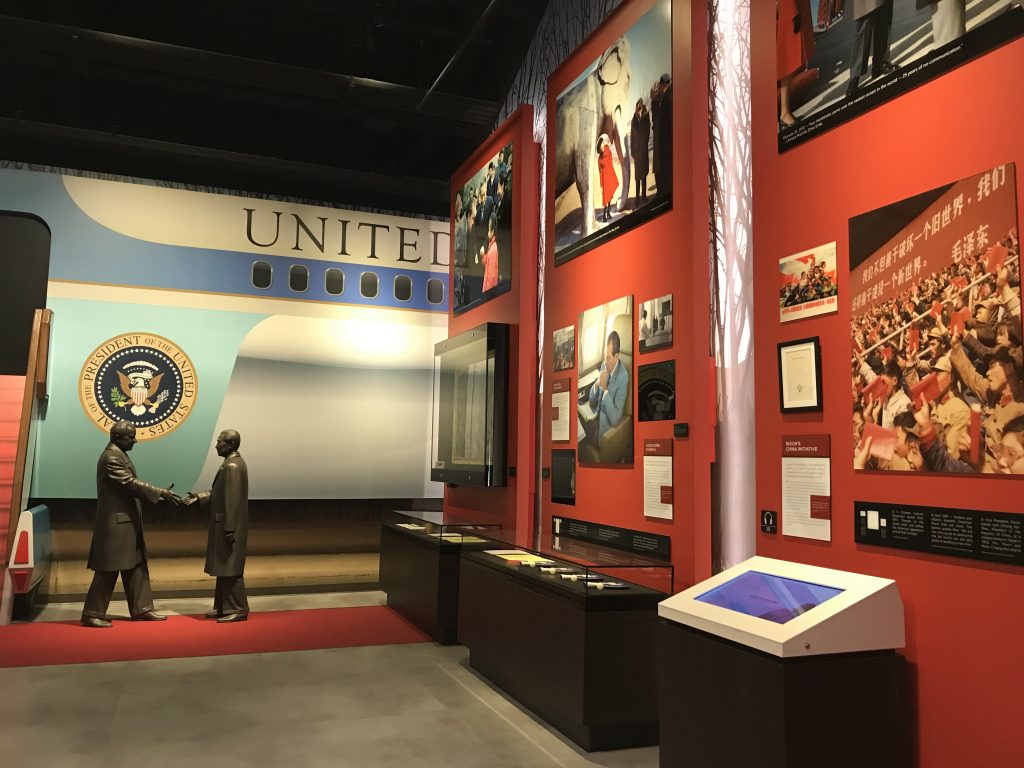
The beginning exhibits deal with Vietnam, domestic policy and communism before showing Pat Nixon’s gowns and gifts from foreign governments. An entire section focuses on Nixon’s foreign policy and 1972 trip to China. I can’t remember the time that China didn’t trade with the US so I found this very informative.
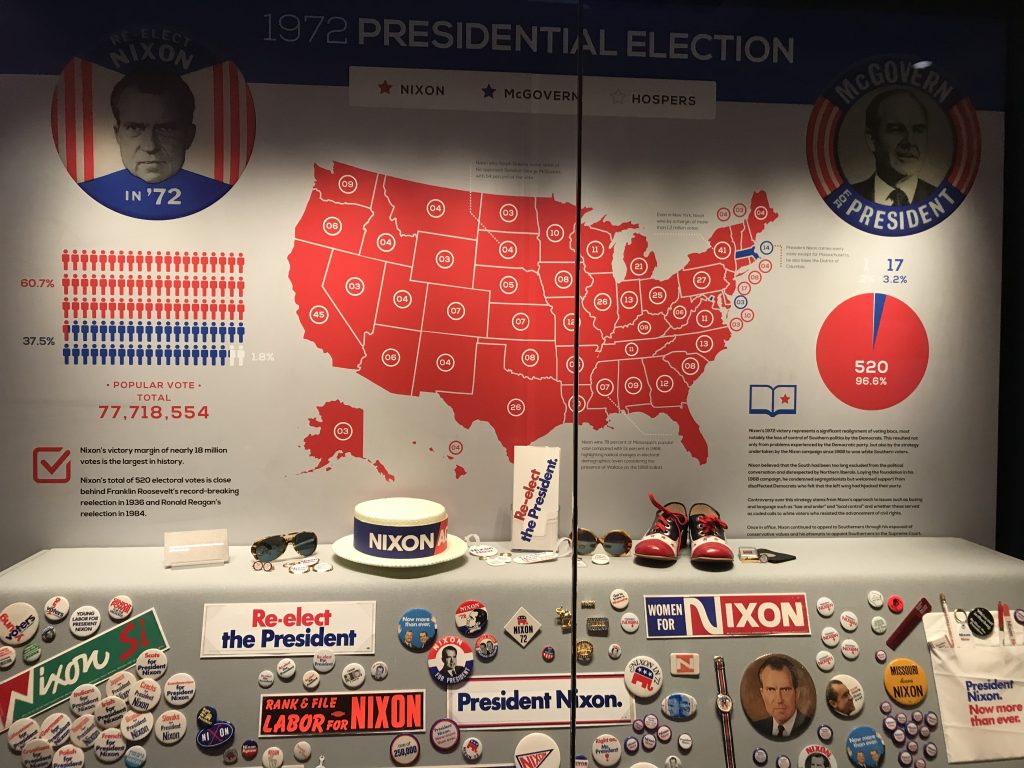
One exhibit highlighted Nixon’s 1972 campaign for a second term. Ads played from the time and I recognized the song from one. I certainly didn’t remember the words, but it was sort of a deja vu that I had heard this song as a child.
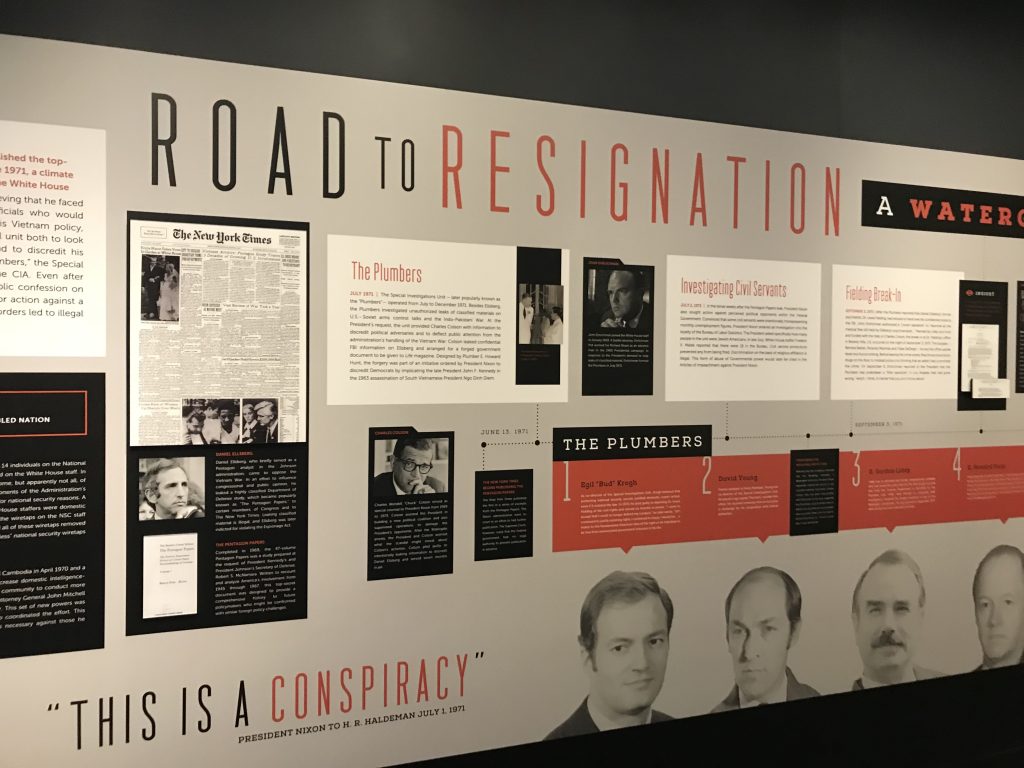
Now it gets really interesting. Although I’ve seen “All the President’s Men” many times, this exhibit offers the best synopsis of the Watergate scandal with pictures, newspaper articles and a timeline. This wasn’t always the case. The museum opened in 1990 by supporters of the disgraced president and showed Watergate only from his viewpoint. Although it was a museum, it wasn’t part of the presidential library system – mainly because it held none of Nixon’s papers during his presidency. These were confiscated in 1974 by the US Presidential Records and Materials Preservation Act which stipulated that because of Watergate, all Nixon presidential records were to be held by the National Archives. In 2007, the once private museum became part of the presidential library system, falling under the US Archives. A more complete and objective Watergate gallery reopened in 2011 and an overhaul of the other exhibits finalized in 2016.
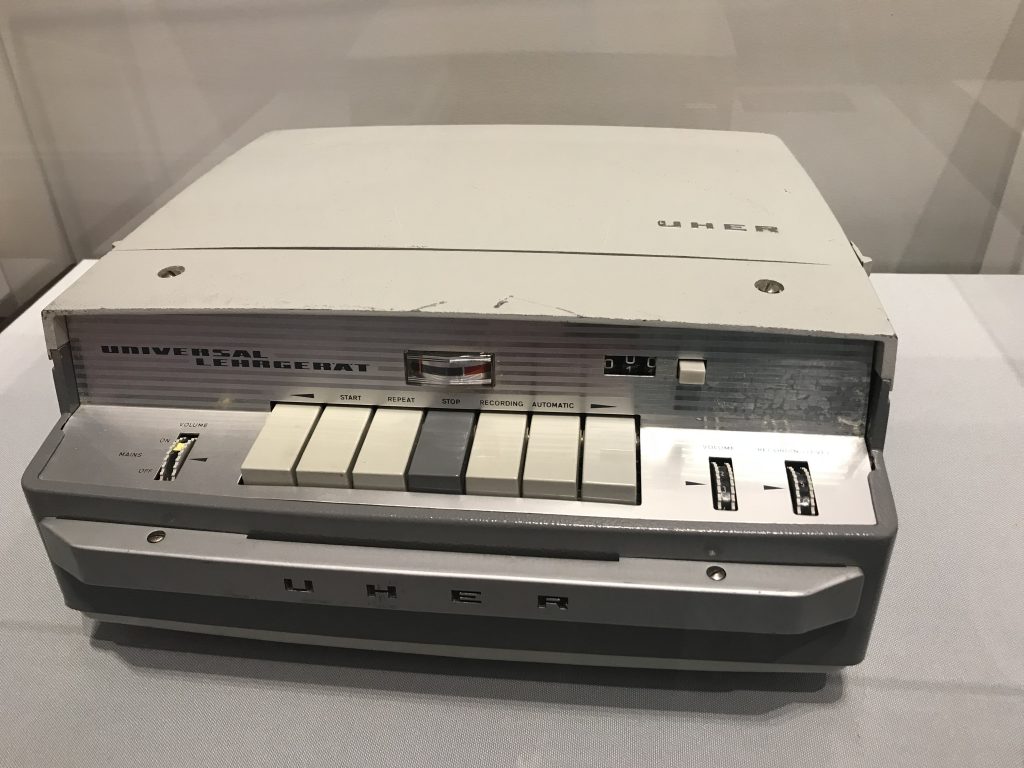
My favorite was a film that played various recording from the tapes with voices from Jon Ehrlichman, John Dean and Nixon himself, What I found surprising is how clunky the tape recording system was when I saw it on the display.
The Grounds
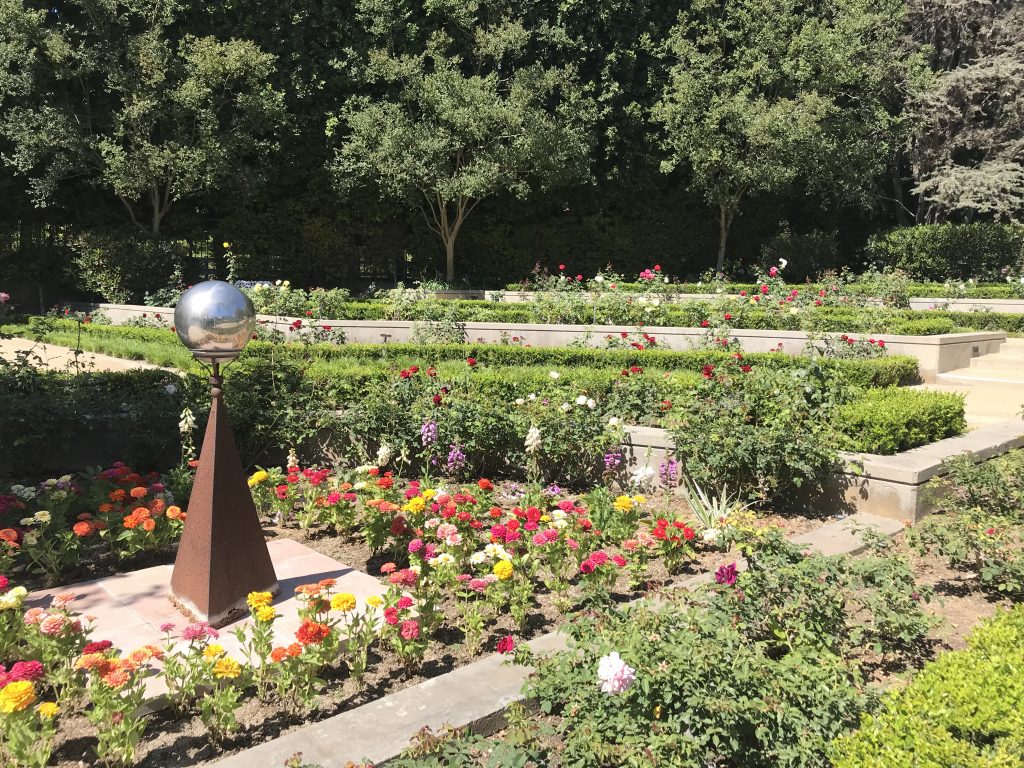
Outside, carefully manicured grounds and a rose garden awaited. With a replica of the gazebo where Tricia Nixon married Edward Cox in 1971, couples can rent the facility for weddings.
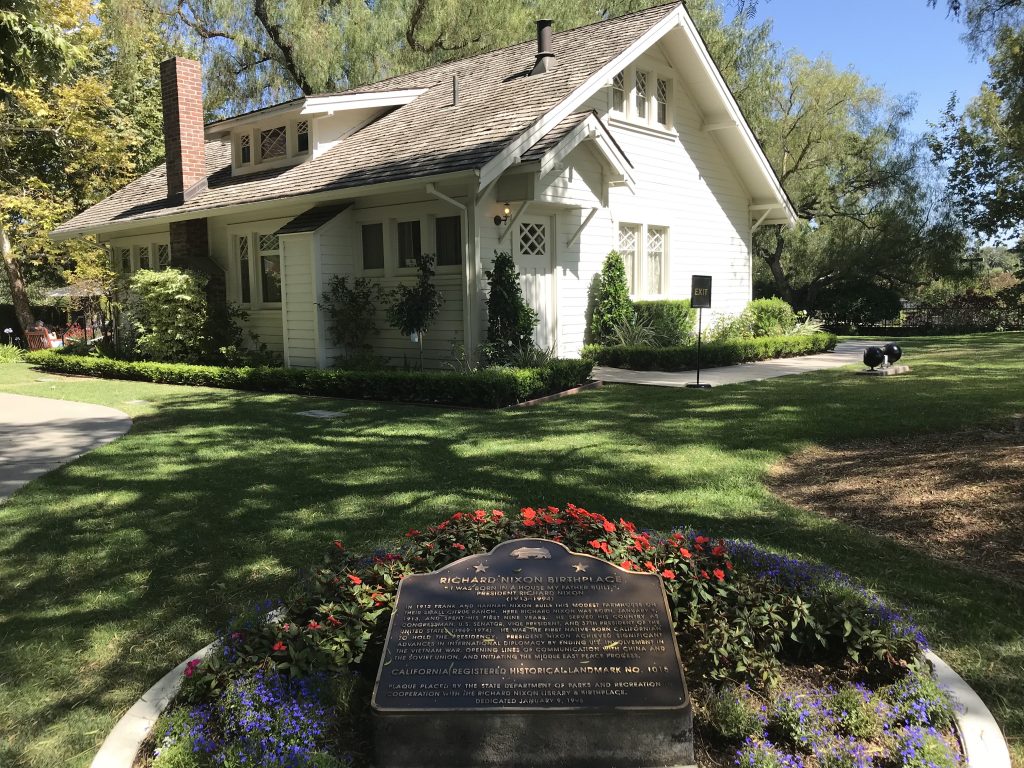
At the far end of the property, a small wooden framed house sat. Built around 1913 by Nixon’s father, this was home to the family until 1922. In the museum, archival footage showed the home surrounded by citrus trees. and its no wonder as the Nixons owned a lemon grove on this spot. Supporters of the original museum wanted it at La Casa Pacifica, Nixon’s “Western White House” in San Clemente. However, when it fell through, the community of Yorba Linda enticed the museum to locate here instead.
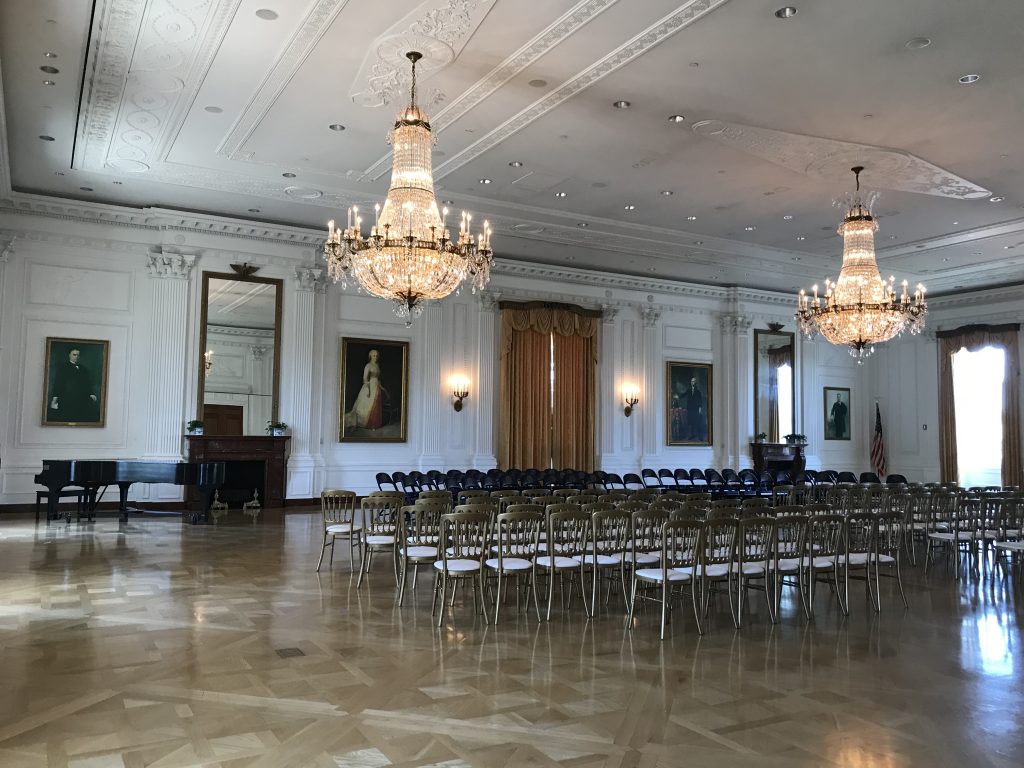
An education wing sits on the premises with reproductions of the East Room and Cabinet Meeting Room, as well as a gift shop.
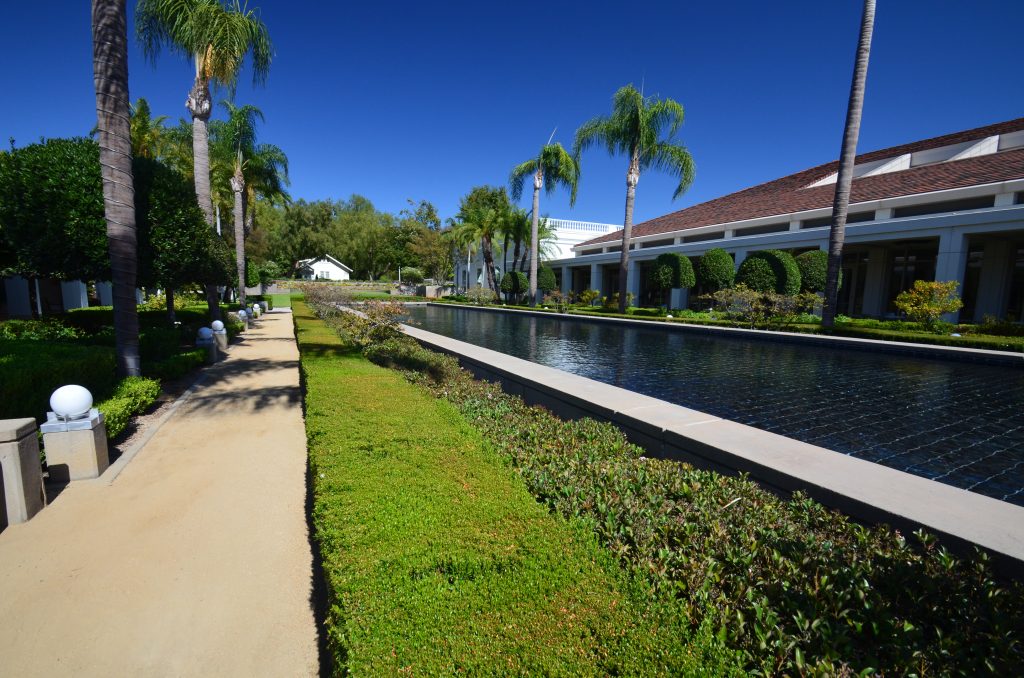
What was a bit odd was that after showing Nixon’s resignation, the exhibits go back to Nixon’s early life and political rise to becoming president. From there, we see Nixon’s post-presidential life in California. So instead of a linear time line of Nixon’s life, the museum starts in the middle – his presidency, then goes back to the beginning and then to the ending. It’s like eating a peanut butter sandwich with the filling on the outside. Although disconcerting, I found it helpful that the museum presented the presidency and Watergate before his life story. By seeing how he ran the country first, then looking back on his early life, we could see the complexities in his character. Was Nixon good? Was Nixon bad? The museum shows he did some good things and he did some bad things. I can only say he was complex.
For more information, click here.
